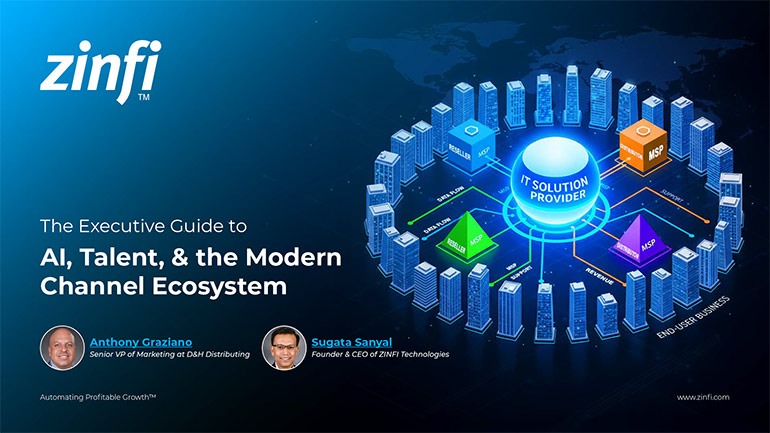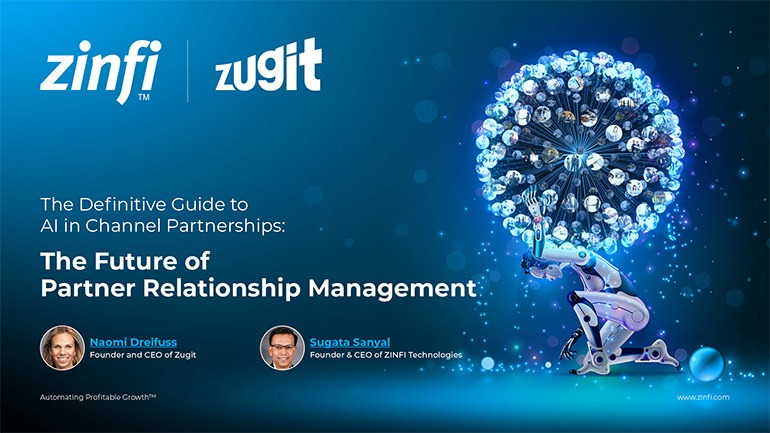Best Practices Articles

Unlocking Agility in Manufacturing Partner Programs Without Overburdening IT
In the era of Manufacturing 4.0, the factory floor has become a marvel of interconnected efficiency. Smart sensors, IoT devices, predictive maintenance algorithms, and data analytics drive unprecedented levels of productivity and quality control. This is the "smart factory," a testament to innovation and a critical engine for competitive advantage. Yet, for a vast number of global manufacturers, this forward-thinking, data-driven philosophy stops abruptly at the factory gates. The vast, complex, and critically important network of distributors, dealers, value-added resellers (VARs), and system integrators—the very channel that delivers these innovative products to the end customer—often remains managed by a primitive patchwork of disconnected spreadsheets, overflowing email inboxes, and legacy point solutions.
This stark contrast between a hyper-efficient back-end production and a chaotic, disconnected front-end channel creates a significant drag on growth, efficiency, and brand consistency. The pressures on modern manufacturers are immense: fierce global competition, shrinking product margins, and a market that increasingly demands holistic solutions, not just standalone products. In this environment, the partner channel is not merely a sales outlet; it is an extension of the brand, a critical source of market intelligence, and a key driver of customer success. Leaving its management to outdated, manual processes is a strategic liability.
The core challenge is clear: how can manufacturers inject the same level of agility, visibility, and data-driven insight into their manufacturing partner programs that they have meticulously engineered in their production lines? For many, the answer seems to involve a massive, multi-year IT project that drains resources, disrupts operations, and requires extensive custom coding. But this is a false choice. The path to a high-performing channel doesn't have to be paved with overwhelming IT complexity. Modern, unified platforms now offer a way to achieve a profound digital transformation in partner management, enabling agility and growth without placing an undue burden on internal technology teams.
This definitive guide explores the deep and often hidden costs of a disconnected channel, deconstructs the core operational challenges that manufacturers face daily, and outlines a strategic path toward a unified, agile, and highly effective partner ecosystem that is ready for the future.

The High Cost of a Disconnected Channel Network
A fragmented approach to managing manufacturing partner programs isn't just inefficient; it actively erodes profitability and competitive advantage. When each facet of the partner journey is handled by a separate, non-communicating tool or manual process, the costs quickly multiply. These costs are often hidden within departmental budgets and operational inefficiencies, but their impact on the bottom line is very real. Moving beyond this fragmented state to one that delivers comprehensive visibility, control, agility, efficiency, and accelerated growth is no longer optional—it's essential for survival and leadership. Let's examine the tangible costs in more detail:
Revenue Leakage and Channel Conflict
This is perhaps the most direct cost. In a disconnected system, leads captured by corporate marketing are often sent to partners via email, with no reliable way to track follow-up or conversion. Deals get stuck in the pipeline without visibility. Worse, when multiple partners claim the same deal without a centralized and automated deal registration system, it sparks channel conflict. This erodes trust, demotivates partners, and can lead to a race-to-the-bottom on pricing that damages brand value. The lack of a single source of truth for leads and deals means revenue opportunities are not just missed; they are actively lost.
Brand Dilution and Inconsistent Customer Experience
Manufacturers of complex industrial, technological, or medical equipment spend billions to cultivate a brand image of precision, quality, and reliability. This brand equity is put at risk every day by well-meaning but ill-equipped partners. Without a central, easy-to-access repository for marketing assets, partners will often resort to using a ten-year-old logo from a Google search, an outdated product datasheet saved on their local drive, or creating their own off-brand marketing collateral. This results in a cacophony of inconsistent messaging in the market, confusing customers and damaging the premium brand identity that is a key differentiator.
Partner Disengagement and Churn
Top-performing channel partners are a valuable and finite resource. They have a choice of which vendors to align with. If doing business with you is difficult, they will gravitate toward competitors who make it easy. When partners are forced to navigate multiple portals, fill out complex forms for MDF claims, and struggle to find the training or sales tools they need, it creates immense friction. This friction leads to frustration, disengagement, and ultimately, churn. The cost of recruiting, onboarding, and enabling a new partner is significant; losing an established, high-performing partner due to poor operational experience is a costly and entirely avoidable mistake.
Wasted Marketing Spend and Zero ROI Visibility
Globally, manufacturers invest heavily in Market Development Funds (MDF) and co-op marketing programs to fuel channel growth. In a fragmented system managed by spreadsheets, tracking these investments is a nightmare. Channel marketers spend countless hours processing fund requests and validating proof-of-performance claims instead of focusing on strategy. More damaging is the complete lack of visibility into the return on investment (ROI). It becomes nearly impossible to determine which partners, campaigns, and marketing tactics are actually driving results, leading to misallocated budgets and wasted marketing spend year after year.
This operational chaos is a direct barrier to the modernization that manufacturing leaders are championing across their organizations. It’s impossible to build a channel fit for the future of manufacturing 4.0 on a foundation of disconnected data and manual processes.
Deconstructing the Core Challenges in Manufacturing Partner Programs
To truly appreciate the solution, we must first deeply understand the specific, granular pain points that plague channel managers, marketing leaders, and sales executives in the manufacturing sector. These challenges are magnified by global supply chains, highly technical products, and complex multi-tiered distribution models.
The Visibility Black Hole: Inability to Track Performance and Pipeline
For many channel chiefs, getting a clear, up-to-the-minute picture of partner performance is a constant struggle. They are often reliant on partners self-reporting sales data via spreadsheets, which are submitted weeks or even months after the quarter ends. This data is frequently incomplete, inaccurate, and difficult to consolidate across hundreds or thousands of partners.
This lack of visibility extends beyond just sales numbers. It includes partner engagement: Are partners logging into the portal? Are they completing critical training and certifications? Are they actively utilizing the marketing assets provided? These are leading indicators of partner health and future success, yet most organizations have no way to track them. The problem is even more acute in multi-tier distribution models, where manufacturers have zero visibility into the downstream resellers who are actually selling to the end customer.

The Unified Solution
Modern partner management platforms solve this by creating a single source of truth for all partner-related activities and performance. This provides channel managers with real-time tracking of the pipeline, MDF usage, co-selling activity, and overall partner engagement. With granular analytics, leaders can access deep reporting on everything from partner recruitment and deal registration to MDF ROI and revenue impact, all through configurable dashboards. This centralized visibility is a cornerstone of effective revenue operations, turning reactive reporting into proactive, data-driven management.
The Complexity of Channel Incentives and MDF Management
As mentioned, managing MDF and other channel incentive programs via spreadsheets and email is a recipe for chaos and wasted resources. The administrative burden on the channel marketing team is immense, involving a manual cycle of reviewing proposals, validating claims, and processing payments. Partners find the process cumbersome and opaque, often leading to unspent funds and missed marketing opportunities.
The strategic failure is the inability to connect spend to performance. A manufacturer might offer a 2% co-op fund on all sales, but has no way to confirm if those funds are being used for high-impact activities or simply for a partner’s general overhead. There is no mechanism to A/B test different incentive models or to reward partners for specific strategic behaviors, such as selling a new product line or penetrating a new vertical market.
The Unified Solution
A unified platform automates the entire lifecycle of incentives and MDF. Partners can submit proposals, make fund requests, and submit claims with proof-of-performance directly through the portal. The system automates the approval workflows, tracks fund allocation and disbursement, and—most importantly—connects the investment directly to sales outcomes. This allows manufacturers to get clear ROI measurement for every dollar spent and to design flexible, performance-based incentive programs that drive strategic objectives.
Inefficient Onboarding and Enablement: A Slow Ramp to Revenue
The faster a new partner can be onboarded, trained, and certified, the faster they can start generating revenue. However, for most manufacturers, this process is painfully slow, manual, and inconsistent. It involves a disjointed series of emails for contract signing, separate phone calls for business planning, and ad-hoc scheduling for technical training. The process can take weeks or even months.
A typical manual onboarding process looks like this:
- Application & Vetting: A prospective partner fills out a PDF form and emails it in. The channel manager manually vets the information.
- Contracting: Legal emails a contract, which is printed, signed, scanned, and emailed back.
- System Setup: The manager submits an IT ticket to create a portal login, which can take days.
- Business Planning: Links to training documents and videos are sent via email, with no way to track completion or comprehension.
This entire sequence is slow, prone to error, and creates a poor first impression. It represents a significant opportunity cost for every day a capable partner is not yet ready to sell.
The Unified Solution
A unified approach is designed for growth acceleration. By improving the onboarding and enablement process, it delivers a faster time-to-revenue. Leading systems accomplish this by creating hyper-personalized partner journeys with automated, role-based workflows and dynamic segmentation. This allows for tailored experiences that get partners productive faster. Stronger partner engagement is achieved through these personalized portals and experiences, ultimately improving partner productivity and revenue contribution.
The Strategic Shift: From Disparate Tools to a Unified Platform
The solution to these multifaceted challenges is not to find a better spreadsheet template or another single-purpose software tool. The solution is a strategic shift in thinking: moving away from a collection of disparate tools and toward a single, unified platform. This is the essence of infrastructure consolidation in the context of channel management. A Unified Partner Management (UPM) platform is a single SaaS solution covering the entire partner lifecycle—from recruitment and onboarding to training, co-marketing, co-selling, and incentives.
The primary benefit is the elimination of data silos, which creates a holistic, 360-degree view of the entire partner ecosystem. But the strategic value runs much deeper. It’s about creating a superior Partner Experience (PX). In today’s competitive market, PX is as important as Customer Experience (CX). A seamless, intuitive, and supportive partner experience is a powerful competitive differentiator that fosters loyalty and drives performance.
Crucially, this transformative shift does not require a massive lift from the IT department. Modern UPM platforms are designed specifically to deliver agility and efficiency for business users.
- Ease of Use for Business Teams: The best platforms feature intuitive, drag-and-drop workflow builders and modular applications. This empowers non-technical channel managers to act like agile program owners. They can design, launch, and adapt partner programs, onboarding workflows, and marketing campaigns quickly, without needing to file a ticket with IT and wait for developer resources. This autonomy dramatically accelerates the speed of business.
- Seamless Integration: A UPM platform must act as the central hub for the partner ecosystem, which requires seamless integration with the core enterprise systems. Leading platforms are built with pre-built connectors for major CRM and MarTech systems like Salesforce, HubSpot, Microsoft Dynamics, and SAP, along with open APIs for extensibility. This ensures that data flows freely, for example, enabling closed-loop reporting where a lead passed to a partner from the UPM platform can be tracked all the way through to a closed deal in the corporate CRM, with revenue automatically attributed back to the correct partner and marketing campaign.
- Operational Efficiency: The business case for a unified platform is compelling. By unifying PRM, Through-Partner Marketing Automation (TCMA), co-selling, and incentives, these platforms reduce redundant tools and the associated subscription fees and maintenance costs. The automation of core workflows frees up hundreds of hours of manual work for channel teams, allowing them to focus on high-value activities like partner recruitment, strategy, and relationship building, which in turn leads to lower operational costs.
This approach allows manufacturers to easily adapt workflows as markets, regions, or partner models evolve, enabling quick, data-driven pivots based on real-time analytics and partner feedback.

The Future of Manufacturing Partner Programs is Unified and Agile
The competitive landscape for manufacturers will only become more intense. Success is no longer just about building a superior product; it's about building a superior, agile, and intelligent route to market. An engaged and high-performing partner channel is a formidable competitive advantage, and the technology used to manage it must be as sophisticated as the products it helps to sell.
This requires moving beyond the fragmented tools of the past. The core principles of manufacturing 4.0—data-centricity, connectivity, and automation—must be applied to your channel. By consolidating your partner management toolset into a single, unified platform, you gain the comprehensive visibility and control needed to manage a global channel at scale. Enterprise-grade platforms are built for this, supporting mid-market to Fortune 100 deployments with complex multi-language, multi-currency, and multi-tier structures.
This strategic investment leads to tangible business outcomes: higher partner loyalty due to a better experience, more predictable revenue streams, and a clear, defensible ROI on every dollar and hour invested in your partner programs. The future of partner management will be even more data-driven, with AI and predictive analytics helping to identify which partners are at risk of churn, recommend the next best sales play, and uncover new high-potential partner recruits.
The journey toward digital transformation in your channel doesn't have to be a multi-year slog that overwhelms your IT department. With the right platform, you can achieve unprecedented agility and insight, driving more revenue through your partners and building a channel ecosystem that is truly fit for the future.
Ready to modernize your manufacturing partner programs without a massive IT overhaul? Explore how a Unified Partner Management platform can transform your partner ecosystem. Schedule a demo today to see the future of channel management in action.
Best Practices Guidebook
 Modernizing Channel Marketing: AI and Ecosystem Enablement Best Practices
Modernizing Channel Marketing: AI and Ecosystem Enablement Best PracticesDownload for FREE
 The Channel’s Shift to Partner-Led With AI Best Practices
The Channel’s Shift to Partner-Led With AI Best PracticesDownload for FREE
 Hyperscalers, ISVs, and AI: Shaping the Future of B2B Software Distribution
Hyperscalers, ISVs, and AI: Shaping the Future of B2B Software DistributionDownload for FREE
 Definitive Guide to a Partner Ecosystem-First Sales Strategy
Definitive Guide to a Partner Ecosystem-First Sales StrategyDownload for FREE
 The Partner-Led Digital and AI Transformation Best Practices
The Partner-Led Digital and AI Transformation Best PracticesDownload for FREE
 Startup Talent Recruitment: Hiring Missionaries, Not Mercenaries
Startup Talent Recruitment: Hiring Missionaries, Not MercenariesDownload for FREE
 The Future of Partner Relationship Management with AI in Partnerships
The Future of Partner Relationship Management with AI in PartnershipsDownload for FREE
 Cybersecurity for the 99%: Strategies from the Frontline
Cybersecurity for the 99%: Strategies from the FrontlineDownload for FREE
 Mastering Partner Relationships: A Strategic Approach to Business Growth
Mastering Partner Relationships: A Strategic Approach to Business GrowthDownload for FREE
 Mastering Partner Relationship Management: Keys to SaaS Channel Success
Mastering Partner Relationship Management: Keys to SaaS Channel SuccessDownload for FREE
 Navigating the AI Revolution: Guide for Partners in the Microsoft Ecosystem
Navigating the AI Revolution: Guide for Partners in the Microsoft EcosystemDownload for FREE
 Mastering the Modern Buyers Journey: Sales Leader’s Guide to AI & Engagement
Mastering the Modern Buyers Journey: Sales Leader’s Guide to AI & EngagementDownload for FREE










